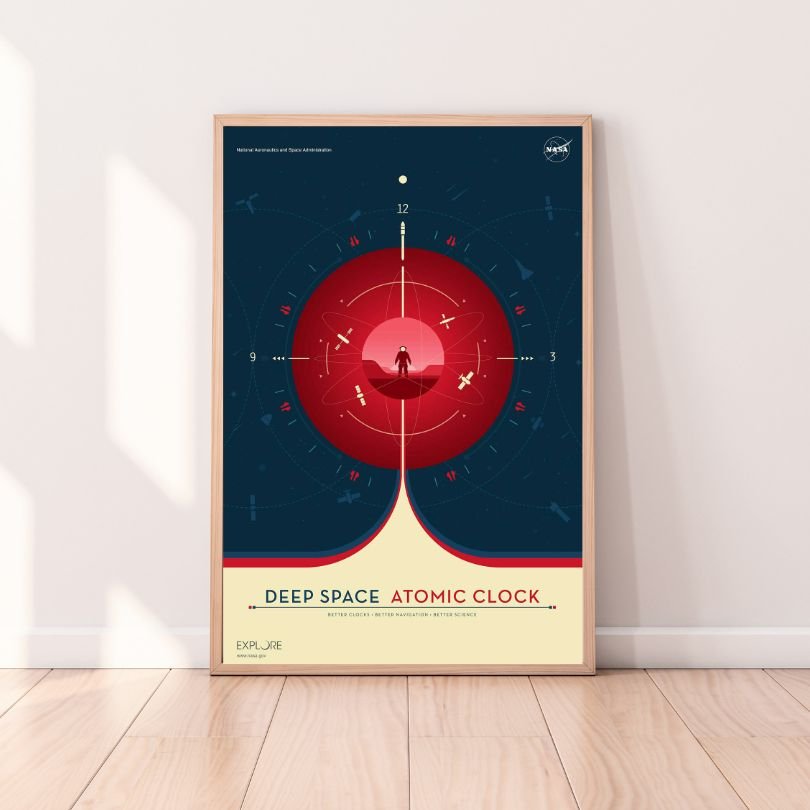NASA Official Atomic Clock Poster
From ₹1,200.00
Description
NASA utilizes atomic clocks for precise timekeeping in various space missions and scientific endeavors. Atomic clocks are highly accurate timekeeping devices that rely on the vibrations of atoms to measure time. NASA employs atomic clocks to facilitate critical tasks such as navigation, communication, and scientific data collection.
In space missions, atomic clocks play a vital role in spacecraft navigation and trajectory calculations. By accurately measuring time, these clocks help spacecraft determine their position and velocity with high precision. This information is crucial for mission success, as it enables precise course corrections and ensures that spacecraft reach their intended destinations accurately and efficiently.
Atomic clocks are also instrumental in facilitating communication between spacecraft and ground stations. They enable synchronization of signals and data transmission, allowing for reliable and efficient communication over vast distances. By maintaining precise time synchronization, NASA can coordinate complex operations and ensure seamless communication with spacecraft exploring distant regions of the solar system.
Furthermore, atomic clocks are essential for scientific research and experiments conducted by NASA. They provide accurate timing for data collection, enabling precise measurement of physical phenomena and observations. Whether studying the behavior of distant celestial bodies or investigating subtle gravitational effects, the precise timekeeping provided by atomic clocks is indispensable for capturing and analyzing data with utmost accuracy.
Overall, NASA relies on atomic clocks to enhance mission precision, improve communication capabilities, and enable accurate scientific measurements. By harnessing the exceptional accuracy of atomic clocks, NASA continues to push the boundaries of space exploration and scientific discovery.
Additional information
| Print Marterial | High Quality Paper, Canvas Paper Roll, Canvas Gallery Wrap |
|---|---|
| Dimensions | 12 (w) x 16 (h) inches, 16 (w) x 24 (h) |
| Frame | No Frame, Black Frame, Brown Frame |








Reviews
There are no reviews yet.